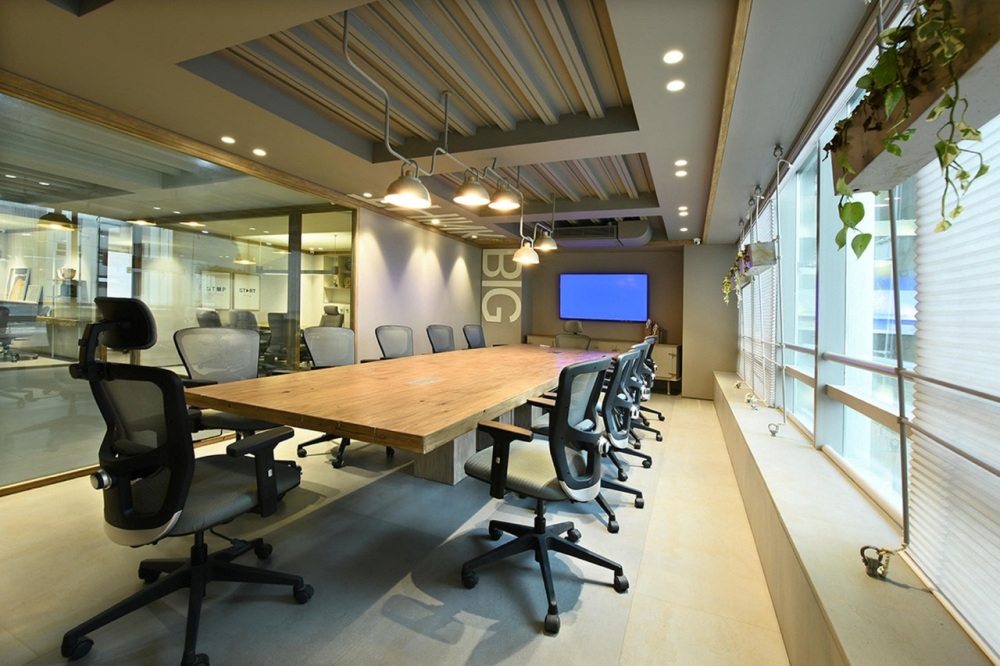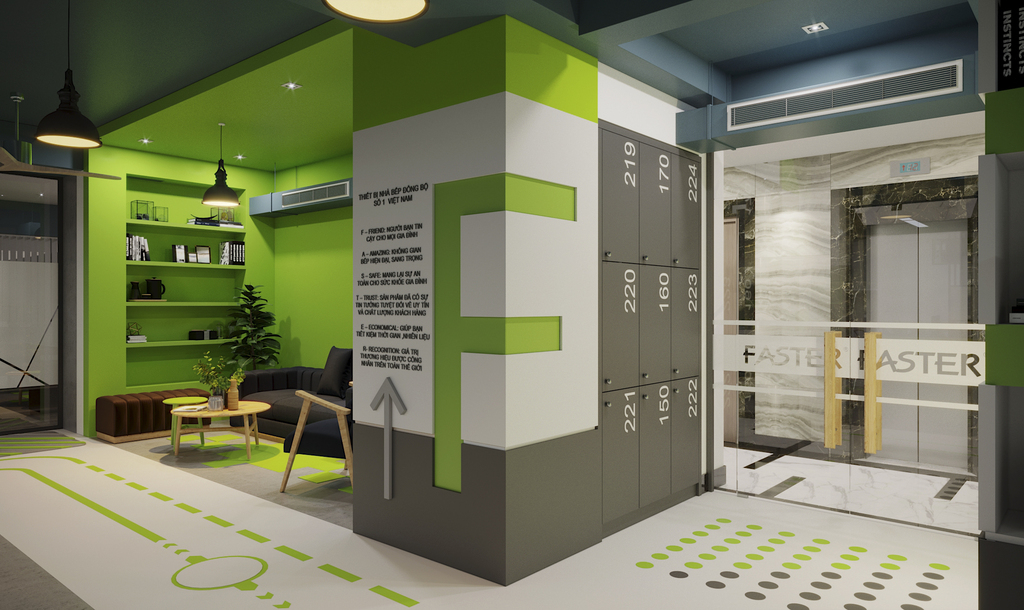
In today’s rapidly evolving business landscape, the design of commercial spaces plays a paramount role in shaping not only how we work but also how we interact, collaborate, and thrive. Gone are the days of cookie-cutter office layouts and sterile environments. Instead, businesses are increasingly recognizing the importance of creating dynamic, inspiring, and functional spaces that cater to the diverse needs and preferences of their employees. From innovative layouts to sustainable materials and cutting-edge technology, commercial interior design trends continue to push boundaries and redefine the workplace experience.
Embracing Biophilic Design
Biophilic design is not merely a passing trend; it’s a fundamental shift in how we approach the design of commercial spaces. By incorporating elements inspired by nature, such as plants, natural materials, and views of the outdoors, businesses can create environments that not only look beautiful but also promote well-being and productivity among employees. Research has shown that exposure to nature in the workplace can reduce stress, boost creativity, and improve overall job satisfaction. As a result, more businesses are investing in biophilic design elements, from living green walls and indoor gardens to incorporating natural light and ventilation systems. These elements not only enhance the aesthetic appeal of the space but also contribute to a healthier and more harmonious work environment.
Flexible Workspaces for Adaptability
The traditional office layout, characterized by cubicles and fixed desks, is giving way to more flexible and adaptable workspaces that accommodate the diverse needs of today’s workforce. With the rise of remote work and the gig economy, employees are no longer tied to their desks from 9 to 5. Instead, they require spaces that support collaboration, creativity, and flexibility. Open-plan layouts, modular furniture, and multipurpose rooms are becoming increasingly popular as businesses seek to create environments that can easily adapt to changing needs and accommodate different work styles. By providing employees with the freedom to choose where and how they work, businesses can foster a more dynamic and agile workforce.
Sustainable and Eco-Friendly Designs
Sustainability is no longer just a buzzword; it’s a necessity. Businesses are under increasing pressure to reduce their environmental footprint and operate in a more sustainable manner. This includes everything from reducing energy consumption and waste to sourcing eco-friendly materials and using green building practices. In commercial interior design, sustainability is being incorporated in various ways, such as using recycled materials, installing energy-efficient lighting and HVAC systems, and seeking LEED certification for buildings. By adopting sustainable design practices, businesses not only reduce their impact on the environment but also create healthier and more efficient workspaces for their employees.
Tech-Integrated Spaces
Technology is reshaping the way we work, and commercial interior design is evolving to accommodate these changes. Smart offices equipped with the latest technology, such as IoT devices, sensors, and automation systems, are becoming the new norm. These technologies not only improve efficiency and productivity but also enhance the overall employee experience. For example, IoT devices can monitor environmental conditions in the office, such as temperature and air quality, and adjust them automatically for optimal comfort. Digital signage and interactive displays can provide real-time information and updates, while collaborative tools and virtual meeting rooms enable seamless communication and collaboration among remote teams. By integrating technology into the design of commercial spaces, businesses can create more connected, efficient, and enjoyable work environments.
Wellness-Centric Environments
Employee well-being is increasingly being recognized as a key driver of productivity, engagement, and retention. As a result, businesses are prioritizing wellness initiatives and amenities in their commercial interior design. This includes everything from ergonomic furniture and standing desks to dedicated relaxation areas and wellness rooms. Biophilic elements, such as plants and natural light, are also being incorporated to create environments that promote mental and physical health. Additionally, businesses are offering wellness programs and activities, such as yoga classes, meditation sessions, and healthy eating options, to support their employees’ well-being. By investing in wellness-centric design, businesses can create environments that not only attract top talent but also foster a culture of health and happiness.
Minimalist and Clean Aesthetics
In today’s fast-paced world, simplicity is key. Minimalist and clean aesthetics are increasingly popular in commercial interior design, as businesses seek to create environments that are free of clutter and distraction. Clean lines, neutral color palettes, and uncluttered spaces create a sense of calm and order, allowing employees to focus on their work without unnecessary distractions. Minimalist design also promotes a sense of sophistication and professionalism, which can enhance the image and brand identity of a business. By embracing minimalist aesthetics, businesses can create timeless and elegant workspaces that stand the test of time.
Customization and Personalization
No two businesses are alike, and their interiors shouldn’t be either. Customization and personalization are becoming increasingly important in commercial interior design, as businesses seek to create environments that reflect their unique identity and culture. From branded decor elements and custom furniture to curated artwork and signage, businesses are incorporating personalized touches into their spaces to create a sense of belonging and ownership among employees. Customization also allows businesses to create environments that cater to the specific needs and preferences of their employees, whether it’s providing flexible workstations, quiet zones for focused work, or collaborative areas for team meetings. By embracing customization and personalization, businesses can create workspaces that inspire creativity, foster collaboration, and enhance employee satisfaction and engagement.
Conclusion
In conclusion, commercial interior design trends play a pivotal role in shaping the future of workspaces. By embracing biophilic design, flexible workspaces, sustainability, technology integration, wellness initiatives, minimalist aesthetics, and personalization, businesses can create inspiring environments that support employee well-being, productivity, and creativity. As we look ahead, the evolution of commercial interior design will continue to drive innovation and transformation, creating spaces that inspire, motivate, and empower the workforce of tomorrow.

FAQs
How do commercial interior design trends impact workplace productivity?
Commercial interior design trends can significantly impact workplace productivity by creating environments that are conducive to focus, collaboration, and creativity. Features such as flexible workspaces, biophilic design elements, and ergonomic furniture can enhance employee well-being and performance.
What are some examples of biophilic design in commercial interiors?
Biophilic design in commercial interiors includes features such as living green walls, indoor plants, natural light sources, water features, and views of nature. These elements help to connect occupants with nature, improve air quality, and promote a sense of well-being.
How can businesses incorporate sustainability into their commercial interior design?
Businesses can incorporate sustainability into their commercial interior design by using eco-friendly materials, implementing energy-efficient systems, minimizing waste, and prioritizing environmental responsibility throughout the design process.
What role does technology play in modern commercial interior design?
Technology plays a significant role in modern commercial interior design, enabling features such as smart offices, digital signage, wireless connectivity, and IoT devices. These technological innovations enhance productivity, efficiency, and connectivity in the workplace.
Why is employee wellness important in commercial interior design?
Employee wellness is essential in commercial interior design because it directly impacts productivity, engagement, and retention. Creating environments that prioritize wellness through features such as ergonomic furniture, natural light, and fitness amenities can lead to happier, healthier, and more motivated employees.
